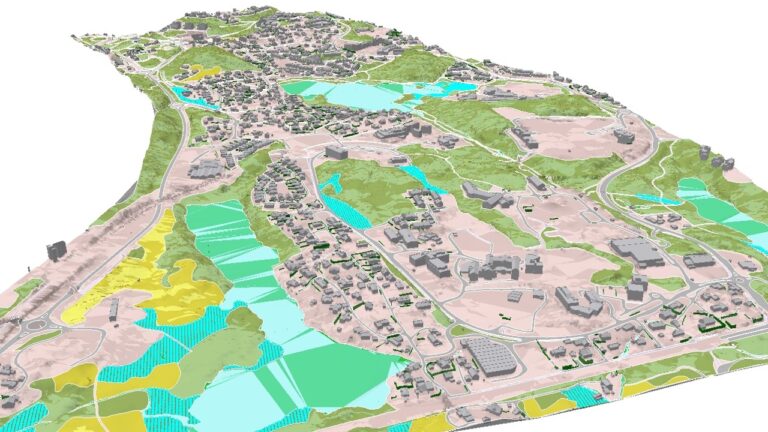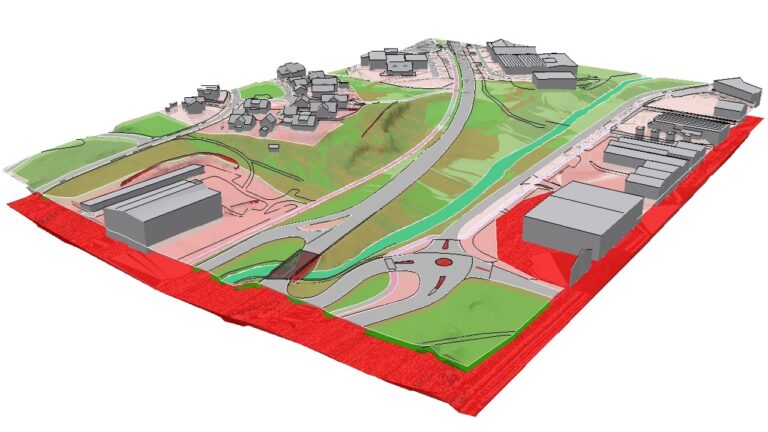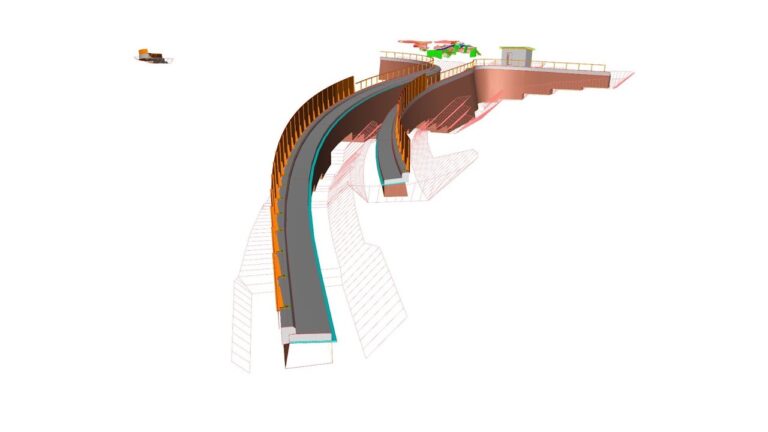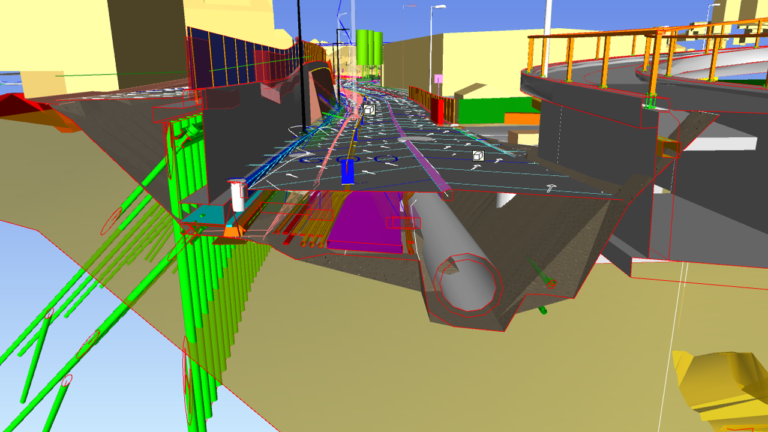Table of contents
Base model
Basic models describe existing 3D objects on, below and above the ground in the project area at a given time. Base models are prepared from the initial data I wrote about here and can describe elements such as topography, geology, natural conditions, technical infrastructure, buildings, demographics, and more.
The base models visualize the situation in the design area in 3D. An existing situation is taken to mean both physical elements, such as topography, infrastructure and vegetation, and conditions, such as risk or protection. Basic models are used in analysis and as the basis for planning, engineering, and construction.
Modeling principles
- Initial data quality should be checked before modeling base models
- Base models should only contain information about existing components in the design area
- Existing components that are modified are included in industry models
- Initial data used in analyzes / calculations or those that are deleted / changed must have 3D geometry.
- Basic data that is only to be visualized in the model and is not used for calculations may have raster geometry.
- The description of each base model includes the following information:
- What base data to include
- Location requirements
- Geometry requirements
- Coverage factor requirements
- Metadata requirements
- Requirements for data format
Model of existing situation
The existing situation model should contain all base models that are included in the design phase.
The purpose of the existing situation model is to gather all relevant information about the existing situation in one common model so that all or selected elements and components can be shown together or separately. The situation model should be used as a starting point for analysis, planning and engineering.
Modeling principles
- Model must represent the existing situation in the design area at the time the model was designed,
- Do not add anything other than those found in the existing situation models,
- Elements that are currently missing must appear as empty spaces in the model,
- Must be possible to separate to display base models,
- Components included in base models must be possible to display in isolation,
Discipline model
Discipline models are used for:
- planning and visualization of the future situation,
- basis for planning, modeling and visualization of other thematic elements
- basis for analysis
- interdisciplinary coordination and quality assurance
- planning, stakeout data, machine control and qualified work in the construction phase design
Modeling principles
- Quality requirements discipline models are specified in the Statens Vegvesen manuals (Norwegian Public Road Administration)
- Design is an iterative process
- Designing solutions in the discipline model may change, e.g. as a result of:
analysis- in other industry models
- interdisciplinary quality control
- Designing solutions in the discipline model may change, e.g. as a result of:
- The content of discipline models must be coordinated and the quality ensured in the model interdisciplinary
- The content of discipline models is used to create output data used on the construction site
Interdisciplinary model
Modeling principles
- Must show the planned situation in the design area at the time the model is designed
- Do not add anything other than those found in discipline models
- Disciplines that are currently missing must appear as empty spaces in the model
- Discipline models must be able to display in insulation,
- Components included in industry models must be displayable in insulation
Coordination model
The coordination model can be used for:
- project coordination,
- interdisciplinary quality control,
- support for decision-making in the project,
- development of solutions in the project project,
- management, technical explanations and progress control,
- basis for analyzes, model views, presentations and other output data,
- presentation of selected solutions for decision makers and the public,
- visualization work tasks in the construction phase,
Modeling principles
- Must show the planned situation in the design area at the time the model is designed
- Do not add anything other than those found in the basic and discipline models
- Disciplines that are currently missing must appear as empty spaces in model
- Disciplines and base models must be displayable in isolation
- Components included in professional models must be displayable in isolation
Summary
As you can see, there are many types of models. It is worth emphasizing here that the BIM Coordinator is responsible for the model of the existing situation, the interdisciplinary model and the coordination model. The designer’s tasks include quality control of basic and industry models.
In the above text, I have presented the basic division of BIM models. In the following articles, I will explore the base models and industry models in more detail.
Stay tuned!















